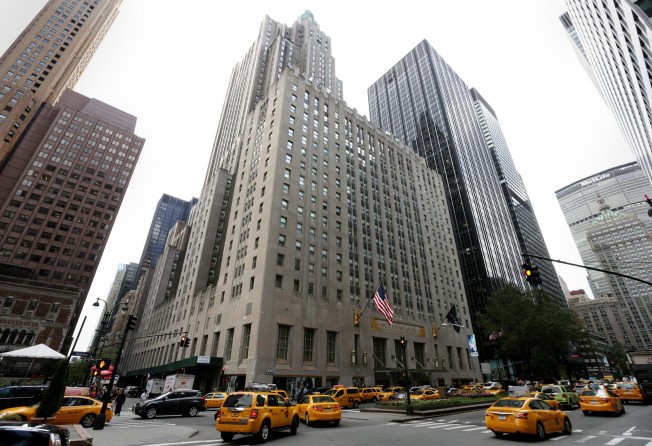More money bound for property markets of US, UK and Australia
Attractive yields, transparency and change in attitude expected to see funds in the region charge into overseas property markets

The next 12 months will see money continue to flow into property markets in Australia, Britain and the United States.
In the first three quarters of last year, US$21.7 billion of Asian capital flowed into commercial real estate in Australasia, Europe and the US, exceeding the US$20.2 billion over the same period last year.
Historically, fourth-quarter volumes are strong and given the deal flow, the total transaction volume for last year is expected to equal or surpass the US$32.3 billion reached in 2013.
These numbers exclude the other significant capital flows heading in the same direction - that of individual investors buying into residential units in Britain, the US and Australia.
Examining investment trends over the past few years can help to explain the current phenomenon.
While Asian savings have been pouring into Western securities, the real movement of large-scale commercial and residential investment has only been relatively recent - essentially after the global financial crisis.
While the West lingered in distress, Asia charged ahead as the growth engine of the world economy. Its strengthened currencies, coupled with distressed stocks in major markets around the world, created a real incentive to start venturing overseas.
The reasons for going overseas have been widely cited and can be listed as a comparison between the East and the West. In Asia, high pricing and low yields are expected; in the West, attractive yields, low cost of debt, recovering leasing markets, longer lease terms and safe and transparent tenure are more attractive.
But in reality, it is simply the availability of stock.
There is a significant gulf in liquidity between the West and the rest. To illustrate, London saw commercial investment hit US$44 billion in 2013. In Beijing, it was a mere 13.4 per cent of that figure at US$5.9 billion.
Aside from the availability of supply and a push for diversification, there have been other forces at work, too. Most notably, there has been a change in attitude towards overseas property investment by a number of Asian institutions - one of the key reasons behind the surge in volume over the past two years.
Two significant deals hit the headlines in the second half of last year - the purchase by Anbang Insurance Group of the iconic Waldorf Astoria hotel in Manhattan for US$1.95 billion and Sunshine Insurance Group's purchase of the Sheraton hotel in Sydney for US$400 million.
Both deals represent the newest wave of institutional capital from Asia: Chinese insurers.
Following a relaxation in the regulations, Chinese insurers are now allowed to invest up to 30 per cent of their assets in real estate, and 15 per cent overseas. These changes have been the catalyst for this new wave of capital. And as these investors educate themselves more in the overseas markets, they are expected to become even more active.
Other key groups investing in overseas real estate are private wealth, developers and sovereign wealth.
The Wealth Report - Knight Frank's research publication on private wealth and property investments - showed ultra-high-net-worth individuals (those with US$30 million or more in net assets excluding their main home) had a strong desire to increase their investments in commercial property. This is being translated into deals concluded, with significant amounts of private wealth not only going into residential but also commercial property.
Asian developers, looking to resell in their home markets, have been active in the global property marketplace as they seek to grow their brands and tap into the outperformance of residential markets in key global cities.
As for sovereign wealth, Singapore and China continue to be the most active in the West, as demonstrated by GIC, Gingko Tree and China Investment Corp.
So what new trends could be expected this year?
In terms of sources, there is likely to be an increase in allocations from Asian insurance companies and pension funds.
On the pension front, the potential in a region that is seeing many ageing societies is enormous. Eyes are on the huge Japanese pension funds such as GPIF, which could start allocating capital towards alternative asset classes.
Over the longer term, it is also likely that new institutions will emerge from other developing Asian economies as they shift from simply building wealth towards building welfare states.
Expect more institutional capital in the form of insurance, pension and sovereign wealth coming from Indonesia, India and Thailand.
Given steeper pricing in the core Western markets, it is expected that many Asian investors will start to look at more secondary cities in Britain and US such as Manchester, Birmingham and Houston, as the recovery in these countries becomes more widespread and pricing seems more reasonable.
There are some risk factors that could affect capital flow, most notably a continued slowdown in China, increased competition from domestic groups in destination markets, and a potential repricing of real estate as interest rates rise.
Even taking these into account, given the sheer weight of capital in Asia and the liquidity on offer in the West, the trend of Asian capital targeting Western bricks and mortar will continue.
Nicholas Holt is the head of research for the Asia-Pacific at Knight Frank